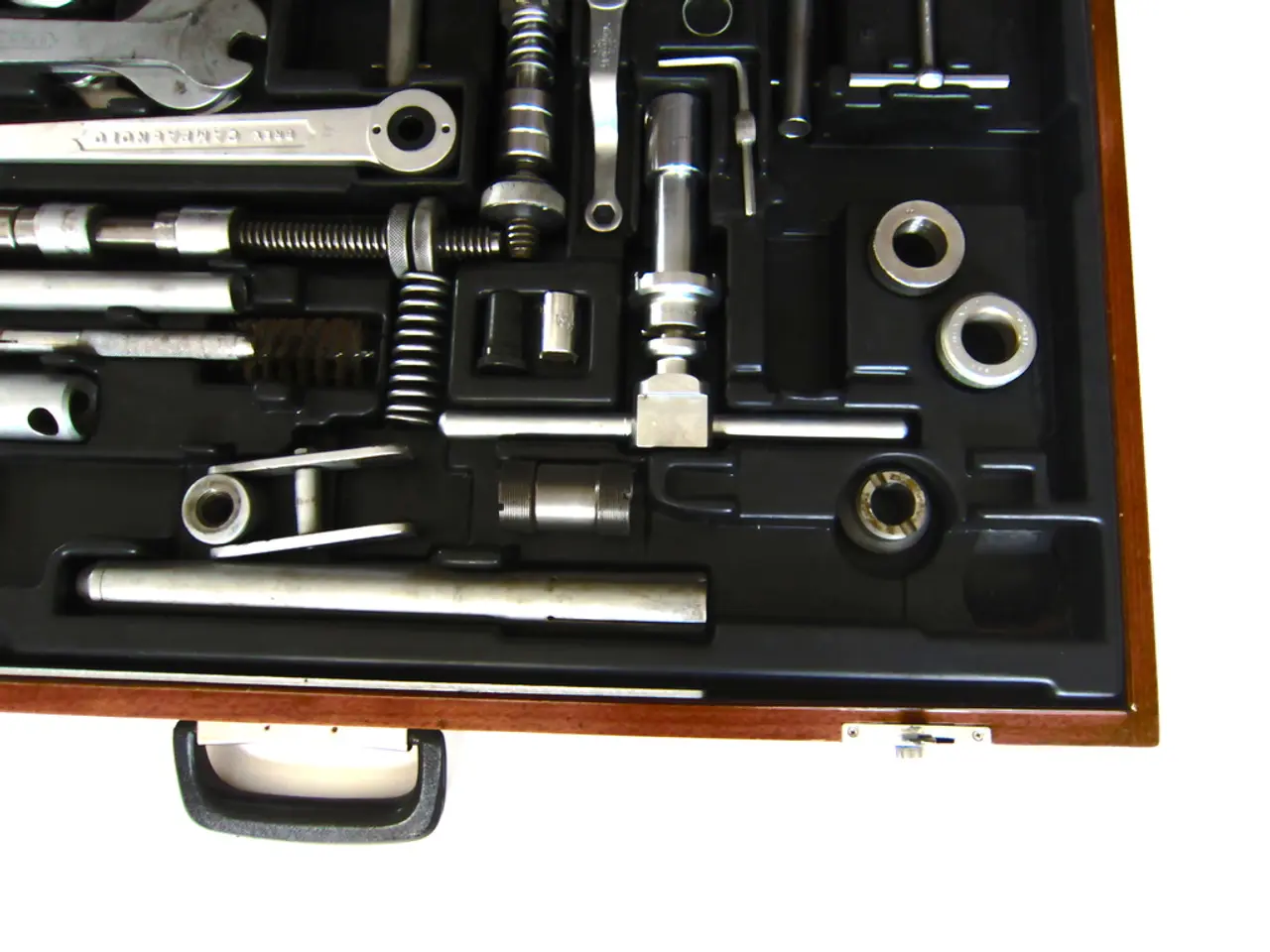Updating Info: Mid-Year 2025 Electronic Design Automation Tools Overview for Engineers (Segment 1)
The electronic design automation (EDA) landscape is undergoing a significant transformation, with AI-driven optimizations, scalable cloud verification, and silicon telemetry taking centre stage. Industry leaders like Synopsys, Cadence, Siemens, and Real Intent are spearheading this evolution, alongside contributions from Arm and emerging modular chiplet strategies.
AI-driven Optimization
Synopsys and Cadence are at the forefront of embedding AI and machine learning across synthesis, floorplanning, formal verification, and debug workflows. Synopsys DSO.ai, for instance, autonomously explores design space to improve power, performance, and area (PPA) metrics and accelerates bug detection with AI-assisted verification targeting difficult corner-cases.
Scalable Cloud Verification
Vendors are adopting cloud-native verification tools to handle the complexity of large chips and chiplet-based architectures. Synopsys, Cadence, and Siemens are collaborating on pre-silicon modeling, co-verification, and emulation environments that scale for multi-die heterogeneous systems based on Arm CSA standards for chiplet integration.
Silicon Telemetry and Modular Chiplets
The move to chiplets, as exemplified by Tesla’s AI5/AI6 chips and Arm’s open CSA specification, emphasizes secure telemetry and debugging across disaggregated chiplet boundaries, including firmware modularity and system-level validation pre-silicon. Real Intent’s Ascent AutoFormal tool with accelerated formal linting supports large gate counts with analytics for RTL verification and silicon quality.
A Closer Look at Key Platforms
Synopsys.ai Copilot
This AI-driven platform boosts productivity across all stages of chip design. In addition to its AI capabilities, Synopsys.ai Copilot functions as an advanced knowledge query tool, accessing data from Synopsys manuals, application notes, videos, and its online SolvNetPlus community.
proteanTecs Proteus
Proteus is a cloud-based analytics platform that leverages Universal Chip Telemetry (UCT) to provide insights into the health and performance of chips throughout their lifecycle. It utilizes embedded on-chip monitoring agents and machine learning to offer predictive maintenance, power optimization, and increased reliability for complex electronic systems.
Cadence Cerebrus Intelligent Chip Explorer
Cadence's Cerebrus Intelligent Chip Explorer is designed for digital full-flow implementation and employs reinforcement learning to optimize chip design in an automated fashion. Not just a simple ML recommendation tool, it's a fully integrated AI engine that learns and iterates across design spaces to deliver improved PPA metrics.
Ansys RedHawk-SC
Ansys RedHawk-SC performs power-integrity, thermal, and reliability analysis on complex SoCs. Its features include IR-drop signoffs, thermal-aware EM analysis, timing impact of voltage variability, chip/package electrothermal co-simulation, cloud-native elastic compute, advanced root-cause, what-if, and ECO analyses.
Cadence Verisium Debug
The Verisium Debug is an advanced, AI-powered debug solution for hardware and software design verification. It integrates all of Cadence's verification engines and comes equipped with a range of apps for streamlining the debugging process, including Verisium AutoTriage, SemanticDiff, WaveMiner, PinDown, Debug, and Manager.
In Conclusion
These platforms—Cadence Cerebrus, Ansys RedHawk-SC, proteanTecs Proteus, Cadence Verisium Debug, Synopsys.ai Copilot, and Real Intent’s Ascent AutoFormal—are redefining how silicon gets designed and verified today. They are shaping the future of EDA, moving beyond simulation speed and timing closure to building efficient, optimized designs with fewer bugs and increased predictability.
- The manufacturing industry is witnessing a significant transformation in the electronic design automation (EDA) landscape, with AI-driven optimizations, scalable cloud verification, and silicon telemetry taking the lead.
- Industry leaders like Synopsys, Cadence, Siemens, and Real Intent are spearheading this evolution, working on embedding AI and machine learning across synthesis, floorplanning, formal verification, and debug workflows.
- Synopsys DSO.ai, for instance, autonomously explores design space to improve power, performance, and area (PPA) metrics and accelerates bug detection with AI-assisted verification.
- Vendors are adopting cloud-native verification tools to handle the complexity of large chips and chiplet-based architectures.
- Synopsys, Cadence, and Siemens are collaborating on pre-silicon modeling, co-verification, and emulation environments that scale for multi-die heterogeneous systems based on Arm CSA standards for chiplet integration.
- The move to chiplets, as exemplified by Tesla’s AI5/AI6 chips and Arm’s open CSA specification, emphasizes secure telemetry and debugging across disaggregated chiplet boundaries.
- Real Intent’s Ascent AutoFormal tool with accelerated formal linting supports large gate counts with analytics for RTL verification and silicon quality.
- Synopsys.ai Copilot is an AI-driven platform boosting productivity across all stages of chip design, functioning as an advanced knowledge query tool.
- Proteus is a cloud-based analytics platform that leverages Universal Chip Telemetry (UCT) to provide insights into the health and performance of chips throughout their lifecycle.
- Ansys RedHawk-SC, on the other hand, performs power-integrity, thermal, and reliability analysis on complex SoCs, with features like IR-drop signoffs, thermal-aware EM analysis, and advanced root-cause, what-if, and ECO analyses.
- Cadence's Cerebrus Intelligent Chip Explorer is designed for digital full-flow implementation and employs reinforcement learning to optimize chip design in an automated fashion.
- The Verisium Debug is an advanced, AI-powered debug solution for hardware and software design verification, integrating all of Cadence's verification engines.
- These platforms are redefining how silicon gets designed and verified today, moving beyond simulation speed and timing closure to building efficient, optimized designs with fewer bugs and increased predictability.
- The AI-driven initiatives in the EDA industry are poised to impact various sectors like finance, energy, cybersecurity, lifestyle, education, personal-finance, real-estate, gadgets, and personal-growth, with potential implications for productivity, career-development, and job-search in these areas.
- As AI and machine learning continue to permeate the EDA landscape, home-and-garden, business, online-education, data-and-cloud-computing, technology, smartphones, and artificial-intelligence industries can also expect advancements in areas like goal-setting, lifelong-learning, skills-training, sports, and travel.
- The potential for AI in the EDA industry extends to smartphone manufacturers and AI pioneers like Google, Apple, and Elon Musk's Neuralink, as they seek to push the boundaries of innovation in areas like AI, data-and-cloud-computing, and artificial-intelligence.
- Meanwhile, the growing popularity of self-development practices like mindfulness and personal-growth, coupled with AI’s potential to enhance these experiences, could further catalyze AI integration across various sectors, transforming the way we live, work, and learn in the years to come.






